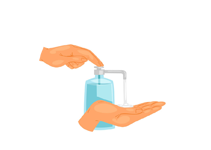Sulbactam
Sulbactam is a beta-lactamase inhibitor used to enhance the effectiveness of certain antibiotics. It is often combined with other antibiotics, such as ampicillin, to treat bacterial infections resistant to standard treatments. Sulbactam works by preventing bacteria from breaking down antibiotics, making them more effective in fighting infections. It is commonly used for respiratory, urinary tract, skin, and abdominal infections. Doctors may also prescribe it for hospital-acquired infections where antibiotic resistance is a concern.
Uses of Sulbactam
- Treatment of respiratory infections like pneumonia
- Used for urinary tract infections (UTIs)
- Effective in treating skin and soft tissue infections
- Prescribed for intra-abdominal infections
- Helps treat bone and joint infections
- Used in hospital-acquired infections
How Sulbactam Works
Sulbactam works by inhibiting beta-lactamase, an enzyme produced by bacteria to resist antibiotics. By blocking this enzyme, Sulbactam allows antibiotics to remain effective against bacterial infections. It does not kill bacteria directly but enhances the action of antibiotics like ampicillin.
Benefits of Sulbactam
- Enhances the effectiveness of antibiotics
- Helps fight antibiotic-resistant bacterial infections
- Used in combination therapy for severe infections
- Works against a broad range of bacteria
- Available in multiple forms for different medical conditions
How to Take Sulbactam
Sulbactam is usually given in combination with antibiotics and is available as an injection. It should be administered by a healthcare professional. The dosage depends on the type and severity of the infection. Always follow the doctor's prescription for the best results.
Type of Dosage Available
- Sulbactam + Ampicillin Injection
- Sulbactam + Cefoperazone Injection
- Sulbactam + Piperacillin Injection
Side Effects of Sulbactam
- Nausea and vomiting
- Diarrhea or stomach pain
- Allergic reactions like rash or itching
- Headache and dizziness
- Injection site reactions (pain, redness, swelling)
- Rarely, liver enzyme changes
Safety Advice
- Inform your doctor about any allergies before use
- Not recommended for people with severe kidney disease
- Monitor liver function if used for a long duration
- Pregnant or breastfeeding women should consult a doctor
- Do not self-administer; should be given by a healthcare professional
Frequently Asked Questions
Q. What is Sulbactam used for?
A. Sulbactam is used to enhance the effectiveness of antibiotics in treating bacterial infections, including pneumonia, UTIs, and skin infections.
Q. Can Sulbactam be taken alone?
A. No, Sulbactam is always combined with antibiotics like ampicillin or cefoperazone to improve their effectiveness.
Q. How is Sulbactam administered?
A. Sulbactam is usually given as an injection by a healthcare professional in a hospital or clinic setting.
Q. What should I do if I experience side effects from Sulbactam?
A. Contact your doctor if you experience severe allergic reactions, persistent diarrhea, or any unusual symptoms.
Q. Can Sulbactam be used in children?
A. Yes, Sulbactam is sometimes prescribed for children, but the dosage must be determined by a doctor based on the child's weight and condition.
Download India's most affordable pharmacy app
- Compare with medicine prices
- Save upto 90% on your medicine bills

Temperature Controlled storage and delivery

Regular Sanitization

Disinfected Packaging














 Added!
Added!